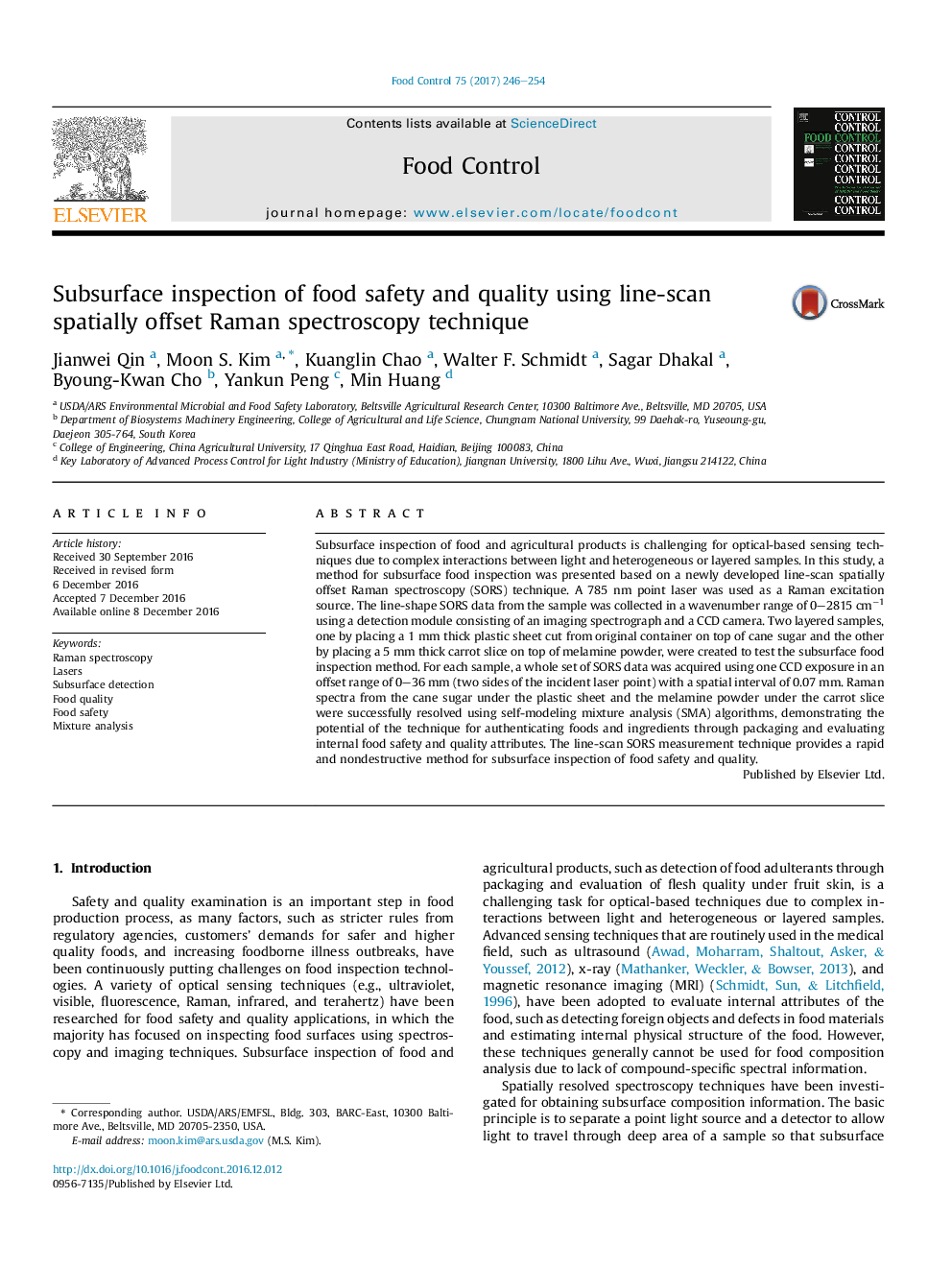| Article ID | Journal | Published Year | Pages | File Type |
|---|---|---|---|---|
| 5767413 | Food Control | 2017 | 9 Pages |
â¢A method for subsurface inspection of food safety and quality is presented.â¢The method is based on line-scan spatially offset Raman spectroscopy technique.â¢The method can detect cane sugar through original plastic packaging.â¢The method can detect melamine powder under a 5 mm thick carrot slice.
Subsurface inspection of food and agricultural products is challenging for optical-based sensing techniques due to complex interactions between light and heterogeneous or layered samples. In this study, a method for subsurface food inspection was presented based on a newly developed line-scan spatially offset Raman spectroscopy (SORS) technique. A 785Â nm point laser was used as a Raman excitation source. The line-shape SORS data from the sample was collected in a wavenumber range of 0-2815Â cmâ1 using a detection module consisting of an imaging spectrograph and a CCD camera. Two layered samples, one by placing a 1Â mm thick plastic sheet cut from original container on top of cane sugar and the other by placing a 5Â mm thick carrot slice on top of melamine powder, were created to test the subsurface food inspection method. For each sample, a whole set of SORS data was acquired using one CCD exposure in an offset range of 0-36Â mm (two sides of the incident laser point) with a spatial interval of 0.07Â mm. Raman spectra from the cane sugar under the plastic sheet and the melamine powder under the carrot slice were successfully resolved using self-modeling mixture analysis (SMA) algorithms, demonstrating the potential of the technique for authenticating foods and ingredients through packaging and evaluating internal food safety and quality attributes. The line-scan SORS measurement technique provides a rapid and nondestructive method for subsurface inspection of food safety and quality.
